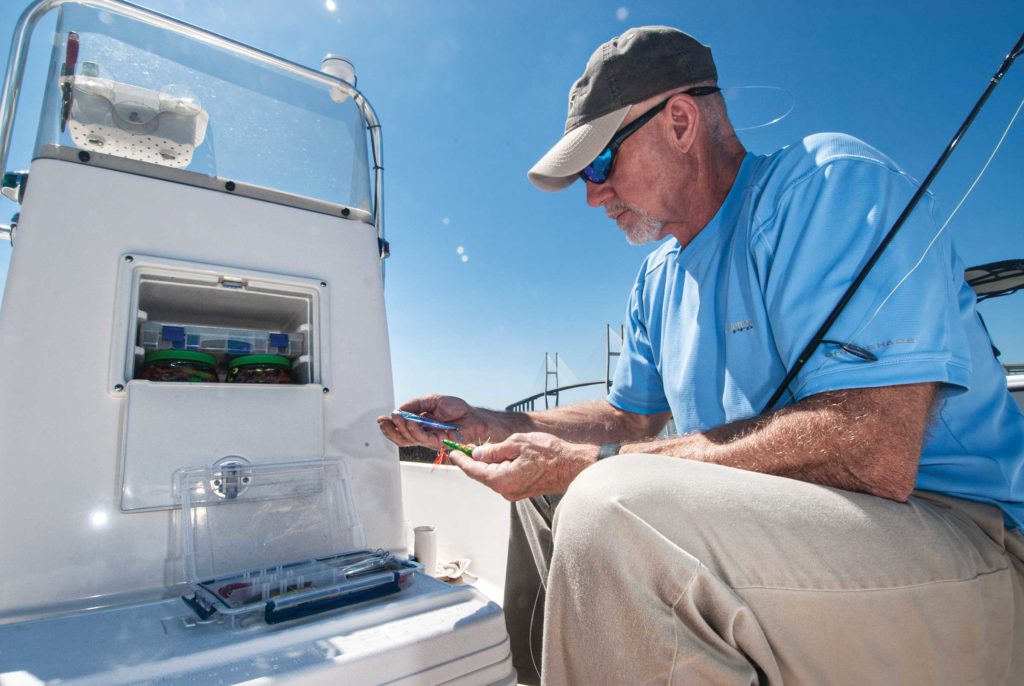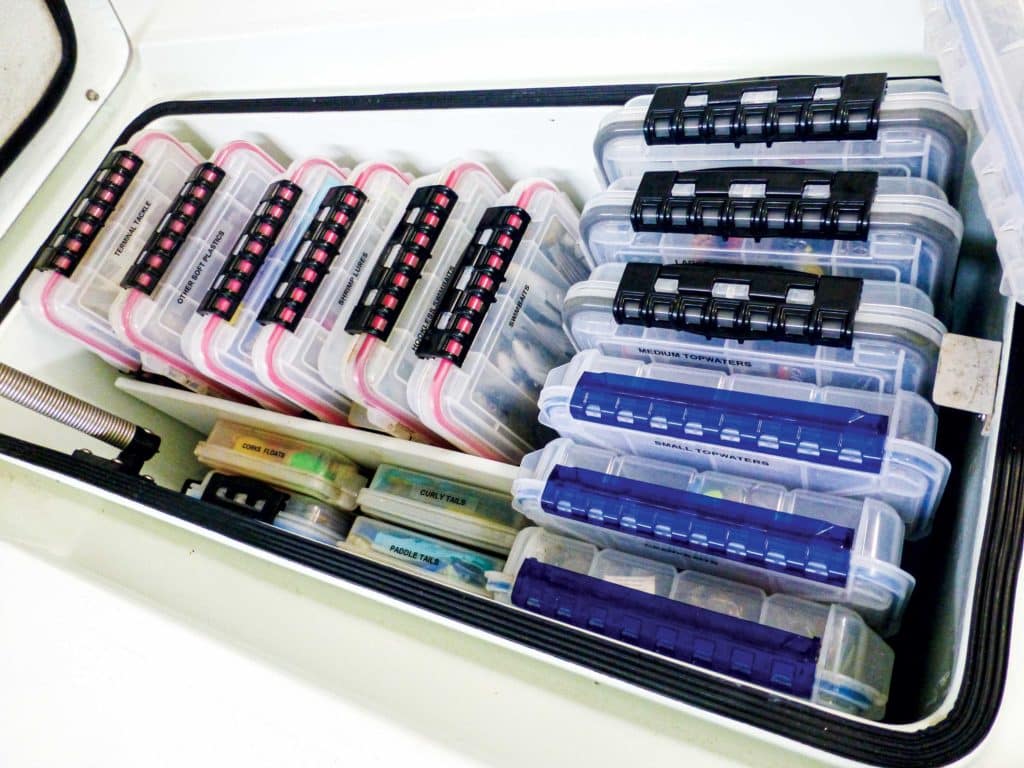
Excuse me while I mention a dirty word here: organize. Sorry, I normally don’t use foul language, but whether we like it or not, organizing the gear aboard our boats simply makes us better anglers.
Bluewater fishermen, in particular, must prepare for anything. Going kingfishing? Well, in some of the same locations you might also find sailfish, dolphin, wahoo, and even reef fishes. Likewise, most inshore anglers need to consider redfish, trout, flounder, and even snook or stripers. Either way, if you’re not prepared with the right tackle, you might miss an awesome bite.
“The key is to have what you need, when you need it,” says offshore-tournament captain George Mitchell of Mexico Beach, Florida, who was kind enough to offer some tips for getting the right kit together and creating much needed offshore and inshore checklists.
Mitchell swears by Plano boxes, in particular the translucent ones with the O-ring seal. He labels each with a marker and places them strategically around his Yellowfin 36. Favorite stowage spots include port and starboard inwale bins custom-made at the Yellowfin factory, as well as cubbies on each side of the leaning post—one for tackle boxes, and the other with drawers for tools.
All totaled, Mitchell keeps 15 boxes in designated locations throughout the boat. Some hold tackle for a particular species such as kingfish; others organize gear by tactic, such as kite-fishing or bottomfishing. “I’ve got a dedicated box for J hooks. I keep them separated from circle hooks, and also keep medium and heavy circles separate,” he says.
Lest anyone considers him too obsessive, he offers: “You need to know your species and time of year, and have a game plan. And then, always have a backup plan. Nine times out of 10, things will change on you.”
Tournament fishermen learn that having an edge can drive them from 10th place to first. When Mitchell and his crew fish tournaments, they all wear nail aprons—like those from stores such as Home Depot—to keep rigging gear close at hand.
Mitchell also carries a box labeled “Everyday,” which includes a broad assortment of terminal tackle. That and his mono and wire leader material reside beneath the leaning-post seat.
For kites, Mitchell made a canvas and Velcro pouch with dividers. The kites slide in and stow underneath the gunwales. He also wraps pool-noodle foam around one of his boat-tower legs and around his trident rod holder to pin hooks and lures.
Read Next: Add Rod and Tackle Storage to Your Fishing Boat
Your vessel’s layout ultimately determines how much gear you can bring and where it’s stowed. But if you carry the right gear and stay organized, you could turn a slow trip into a slugfest. And that’s the name of the game.

Small-Boat Options
Inshore boats, flats skiffs and kayaks can’t hold a lot of gear. Space is more limited and not necessarily relative to the boat’s size. Here are some quick tips from our edit staff:
- TackleWebs’ mesh pouches and similar products add storage to small vessels, often in otherwise unusable spaces. Attach a pair of pouches with paracord or bungee to the legs of a casting or poling platform, or along the fore or aft bulkhead. These can hold waterproof tackle trays or must-have items that don’t need to stay dry.
- Safety gear, a first-aid kit, tools and a release buoy can join the anchor and rode (coiled inside a milk crate) in the bow storage compartment.
- If the boat’s configuration allows, keep life vests in one of the aft compartments, and turn another into dedicated tackle storage. Depending upon the dimensions of the hold, you might fit a dozen tackle trays or more. If the compartment is deep enough, stand the trays on one end, front to back, like a file cabinet. That frequently leaves some space to squeeze in a few more lengthwise along the side, with a 1⁄4-inch-thick Starboard cutting board doubling as a divider.
- To the underside of the aft tackle compartment’s lid, affix a peel-and-stick TackleWebs to stash gloves, leader spools and a fillet knife.
- Mount holders for tools like a BogaGrip, dehooker and spare pliers to the inside of the console doors.
- A kayaker’s most efficient tool is a milk crate or purpose-built kayak crate. Affix a webbed pouch to the framework of the crate for additional storage.
- A life jacket with pockets also holds essentials within a kayaker’s easy reach.
- Yeti also makes waterproof pouches (SideKick Dry) that fasten with Molle straps to a seat backrest or a small Yeti Flip soft cooler.









